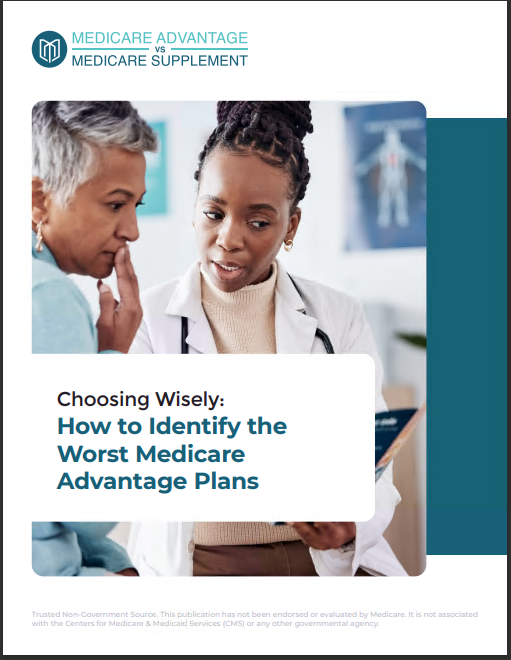Key Takeaways
-
Before choosing any Medicare plan, you need to understand the role of each part—A, B, C, and D—and how they work individually and together.
-
Failing to grasp what each Medicare part covers can leave gaps in your healthcare and increase your out-of-pocket costs unexpectedly.
Why Medicare Has Multiple Parts—and Why You Should Care
Medicare isn’t a single plan. It’s a collection of parts, each with a specific role in covering your healthcare. When you first become eligible—usually at age 65—you’re not automatically enrolled in everything. That’s why understanding what each part does is critical to building a plan that actually meets your needs.
Whether you’re planning to retire soon or already drawing Social Security, knowing the distinctions among Parts A, B, C, and D will guide your decisions. And yes, making the wrong assumption here can be expensive.
Part A: Hospital Coverage Isn’t Entirely Free
Medicare Part A covers inpatient care:
-
Hospital stays
-
Skilled nursing facility care (short-term, after a qualifying hospital stay)
-
Hospice care
-
Some home health care
In 2025, most people don’t pay a monthly premium for Part A if they or their spouse worked and paid Medicare taxes for at least 40 quarters (10 years). But the idea that it’s “free” is misleading. There are out-of-pocket costs:
-
Deductible: $1,676 per benefit period
-
Coinsurance: Starts at $419 per day for extended hospital stays (days 61–90)
Also, skilled nursing coverage requires a prior 3-day hospital admission and only covers 100 days per benefit period—after that, you’re responsible for all costs.
Part B: Medical Coverage With a Premium
Part B covers the services you need outside a hospital:
-
Doctor visits
-
Outpatient procedures
-
Lab tests
-
Preventive care
-
Durable medical equipment (like walkers and wheelchairs)
Unlike Part A, Part B always comes with a monthly premium. In 2025, the standard premium is $185, though it could be higher if your income exceeds certain thresholds.
Other costs include:
-
Annual deductible: $257
-
Coinsurance: Typically 20% after the deductible is met
If you delay enrollment in Part B without other creditable coverage (like through an employer), you may face a lifetime late enrollment penalty.
Part C: The Alternative Route (With Conditions)
Medicare Part C, also called Medicare Advantage, is an all-in-one option that replaces Original Medicare (Parts A and B). These are offered by private insurance companies but must follow rules set by Medicare.
While you still must pay your Part B premium, you get coverage that combines:
-
Hospital services (Part A)
-
Medical services (Part B)
-
Often includes prescription drug coverage (similar to Part D)
-
May include extra benefits like vision, hearing, or dental
You must live in the plan’s service area and enroll during designated times:
-
Initial Enrollment Period (7 months around your 65th birthday)
-
Annual Enrollment Period (October 15 – December 7)
-
Medicare Advantage Open Enrollment (January 1 – March 31)
Plans vary widely in terms of benefits, networks, and out-of-pocket limits. You can’t assume that because it’s a Medicare plan, everything is covered equally.
Part D: Prescription Drug Coverage Isn’t Automatic
Part D covers outpatient prescription drugs, but it’s not included in Original Medicare (Parts A and B). You must enroll in a stand-alone Part D plan or get it through a Medicare Advantage plan that includes drug coverage.
In 2025, these plans are required to offer:
-
A deductible no higher than $590
-
An annual out-of-pocket cap of $2,000 on covered drugs (a significant change from previous years)
Even though the $2,000 cap now eliminates the old “donut hole” coverage gap, that doesn’t mean prescriptions are free. Once you reach the cap, the plan covers the rest, but until then, you pay cost-sharing depending on the drug tier.
Failure to enroll in Part D when you’re first eligible can result in a lifetime penalty unless you have other creditable drug coverage.
You Can’t Mix and Match Everything
Here’s something many people miss: some combinations are off-limits.
-
You can’t have both a Medicare Advantage plan (Part C) and a separate Part D plan (unless the Advantage plan doesn’t include drug coverage, which is rare).
-
You can’t use a Medicare Supplement (Medigap) policy with a Medicare Advantage plan.
So before you sign up for anything, ask yourself: do you want Original Medicare with add-ons, or a single all-in-one plan? That choice determines what you can—and can’t—add later.
Don’t Forget About Late Enrollment Penalties
Medicare punishes procrastination. If you miss your enrollment window and don’t have other creditable coverage, you may pay more for the rest of your life:
-
Part B penalty: 10% added to your premium for each 12-month period you could’ve had it but didn’t
-
Part D penalty: 1% of the national base premium for each month you were uncovered
These penalties aren’t waived easily and stick with you unless you qualify for a Special Enrollment Period.
Timing Is Everything: Know Your Windows
You have limited windows to make choices, and they matter.
-
Initial Enrollment Period (IEP): 7 months around your 65th birthday
-
General Enrollment Period (GEP): January 1 to March 31 each year, for those who missed their IEP
-
Annual Enrollment Period (AEP): October 15 to December 7 for switching plans
-
Medicare Advantage Open Enrollment: January 1 to March 31, for switching Advantage plans or returning to Original Medicare
-
Special Enrollment Periods (SEPs): Triggered by events like losing employer coverage or moving
Missing these dates can delay your coverage or saddle you with higher costs.
Medigap: Not a “Part,” But Still Important
Medigap, or Medicare Supplement Insurance, isn’t a part of Medicare—but it’s a critical piece for those on Original Medicare.
It covers the “gaps” in Parts A and B:
-
Deductibles
-
Coinsurance
-
Copayments
There are standardized Medigap plans labeled A–N, and availability depends on your state. You must be enrolled in both Part A and Part B to buy one. And again, you can’t pair Medigap with a Medicare Advantage plan.
The best time to buy a Medigap plan is during your 6-month Medigap Open Enrollment Period that begins when you’re 65 or older and enrolled in Part B. After that, insurers may deny you coverage or charge more based on health conditions.
Coordination With Other Coverage Matters
Some people have other health insurance when they become eligible for Medicare. That could include:
-
Employer or union coverage
-
VA or TRICARE benefits
-
Medicaid
In these situations, Medicare may act as primary or secondary payer, depending on the rules. It’s essential to talk to your benefits administrator or a licensed agent to avoid losing valuable coverage or duplicating costs.
Prescription Help and Extra Savings Exist—but You Must Apply
If your income and resources are limited, help is available:
-
Extra Help: Lowers costs for Part D, including premiums, deductibles, and copays
-
Medicare Savings Programs: Help pay for Part B premiums and other costs
These programs aren’t automatic. You must apply through your state Medicaid office or Social Security.
Start With the Parts—Then Build the Plan
Every Medicare decision starts with a solid understanding of the parts. Once you know what each one does, you can make informed choices about:
-
Whether to stick with Original Medicare or choose an Advantage plan
-
Whether to add drug coverage or rely on existing prescriptions
-
Whether to protect yourself further with a Medigap plan
Choosing Medicare coverage isn’t about jumping on what sounds good—it’s about fitting the parts together in a way that supports your health and budget. Start with the facts, and then get help tailoring a plan that fits you.
If you’re unsure about your choices, reach out to a licensed agent listed on this website. They can walk you through the rules, timelines, and trade-offs to help you build the plan that’s right for you.










